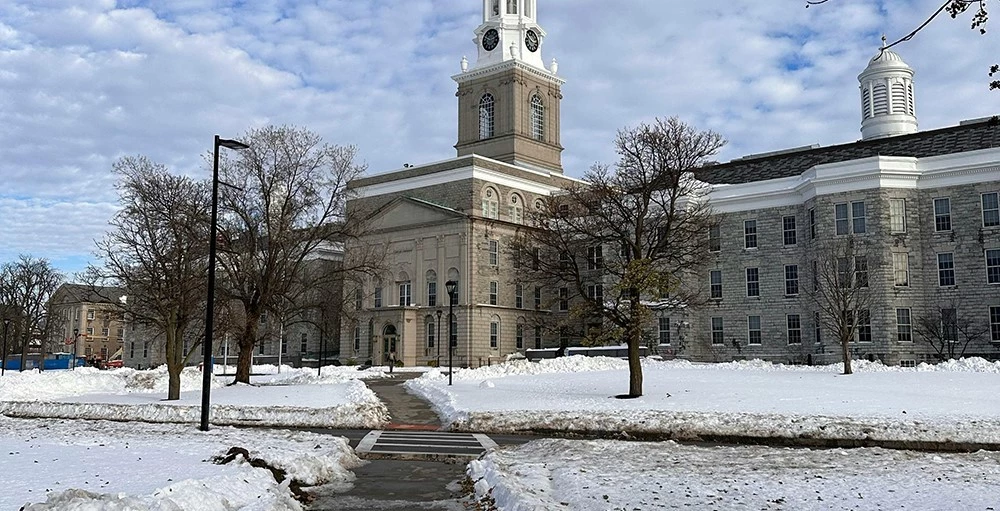College graduation is becoming more important, even in the midst of the student loan debt crisis.
The Bureau of Labor Statistics shows that 18 of the 30 fastest-growing jobs require more than a high school education.1
Additionally, since 1980, the occupations that require education beyond high school grew 68 percent, nearly double that of occupations requiring only high school diplomas.
Unfortunately, only about half of students who start college earn a degree, with only 14 percent of low-income students reaching that milestone.2
And of those who drop out, many have amassed student loan debt they cannot pay due to a lack of earning power.
These students are often worse off than if they had not attempted college in the first place.
There are many suggestions for helping underprivileged students graduate from college.
One of the easiest to implement is adding a student financial wellness program.
The Statistics are Sobering
The non-completion rates for college students, especially minorities, first-generation college students and lower-income students, tell an alarming story:
- Only 11 percent of students in the bottom quarter for income earn a bachelor’s degree within six years, compared to 58 percent from those in top quarter for income3
- Less than one third of students who drop out return to college to earn a degree4
- College dropouts are twice as likely to be unemployed5
- One quarter of students at historically black colleges and universities (HBCUs) borrow $40,000 or more to attend school6
- Nearly 40 percent of low-income students take out student loans
- College dropouts are four times as likely to default on student loans5
Nearly two million students a year drop out of school and never earn a degree, many with substantial student loan debt that could haunt them the rest of their lives.
Current College Rankings Hurt Low-Income Students
Studies have shown that focusing on underprivileged and minority students can increase their graduation rates.
However, when colleges do this, they are often “rewarded” with lower college rankings.
A recent Washington Post article explains how Georgia State made a difference for these students through stronger advising and support.7
Although they nearly eliminated graduation rate gaps due to income and race, they dropped in the U.S. News annual college rank because they chose to admit students with lower SAT scores.
Recently, the U.S. News ranking has begun to consider social mobility and outcomes.8
This has increased Georgia State’s rank as they continue to focus on serving low-income students.
What Some HBCUs are Doing
Many HBCUs are working to help students complete their college education without the need to borrow money.6
However, the schools that often help students in most dire need are the same institutions suffering from a lack of financial resources.
Despite that, HBCUs have come up with some interesting and successful ideas. Here are a few to consider:
- Provide emergency grant aid to help students through difficult times
- Introduce tuition assistance to cover remaining tuition and fees, after grants and scholarships, for students with high grades
- Offer financial incentives for graduating in less than four years
- Start a work-college model that requires students to work on campus or in the community
At Howard, these types of initiatives raised the graduation rate from 38 percent to 52 percent in the past six years.6
Other Programs for Low-Income Students
HBCUs are not the only institutions worried about graduation rates.
A few other programs created to help underprivileged students find success include:
- Summer bridge programs are free and were created to help students understand how the college campus works, where to find assistance when needed and foster relationship-building activities with peers and mentors.9
- Student mentoring programs provide incoming students with a mentor to help them navigate the college experience.
- Predictive analytics uses data to find trends and patterns that show a student is in trouble before they are really in trouble.10
How Financial Wellness Programs Can Help
David L. Kirp, author of The College Dropout Scandal, found that when academic institutions make student success a priority, graduation rates increase.11
Part of student success is helping students understand their finances and creating a reasonable financial plan to complete college and repay student loans.
Financial worries plague today’s college students:
- 70 percent are financially stressed12
- 60 percent worry that they can’t pay for school12
- 50 percent worry about monthly expenses12
- Up to 40 percent don’t have enough to eat13
- 13 percent don’t have stable housing13
Because of financial stress, nearly a third of students neglect their studies, putting them on a path that can ultimately lead to dropping out of school.12
A strong student financial wellness program can help students:
- Understand financial aid eligibility and the paperwork involved
- Learn about funding options beyond student loans
- Consider career salaries compared to student loan repayment
- Create a financial plan that fills in any gaps between current cash flow and projected education costs
- Understand how student loan repayment works and what happens when dropping out of school
- Help create and follow a budget
- Use tools to help visualize how student loan debt will impact their future financial health
Download iGrad's Best Practices for a Campus-Wide Financial Literacy Initiative
1 - https://www.bls.gov/emp/tables/fastest-growing-occupations.htm
2 - https://www.studentclearinghouse.org/
3 - http://pellinstitute.org/downloads/publications-Indicators_of_Higher_Education_Equity_in_the_US_2018_Historical_Trend_Report.pdf
4 - https://www.usnews.com/education/best-colleges/articles/2019-03-20/dropping-out-of-college-why-students-do-so-and-how-to-avoid-it
5 - https://www.amazon.com/gp/product/0190862211/ref=as_li_qf_asin_il_tl
6 - https://www.washingtonpost.com/local/education/hbcus-are-trying-to-spare-graduates-from-crushing-student-loan-debt-its-not-easy/2020/02/18/23a9dcd4-3c68-11ea-baca-eb7ace0a3455_story.html
7 - https://www.washingtonpost.com/education/2018/09/18/college-rankings-need-more-focus-graduation-rates-low-income-students/
8 - https://www.usnews.com/education/best-colleges/articles/ranking-criteria-and-weights
9 - https://eab.com/insights/daily-briefing/student-success/90-of-low-income-first-generation-college-students-dont-graduate-on-time/
10 - https://hechingerreport.org/predictive-analytics-boosting-college-graduation-rates-also-invade-privacy-and-reinforce-racial-inequities/
11 - https://www.washingtonpost.com/education/2019/09/10/a-dereliction-duty-college-dropout-scandal-how-fix-it/
12 - https://news.osu.edu/70-percent-of-college-students-stressed-about-finances/
13 - https://collegepromise.org/cp-research/hungry-and-homeless-in-college/








